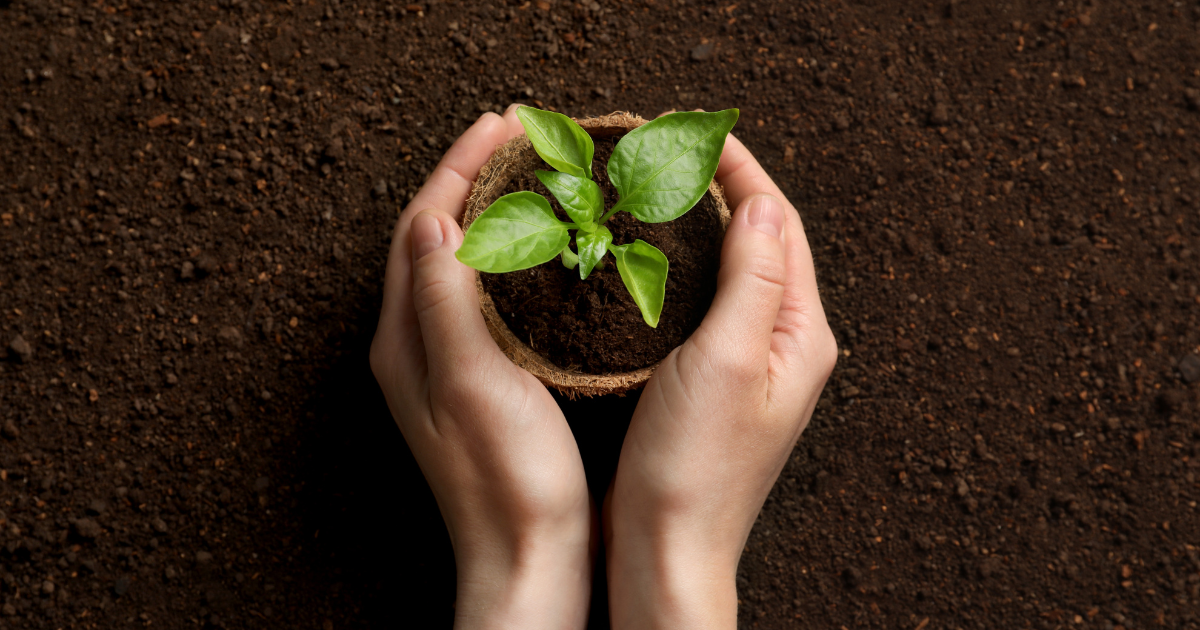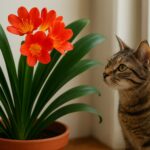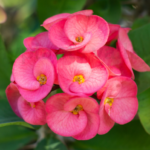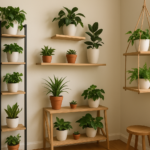Welcome to the intriguing world of gardening, where every element plays a vital role in nurturing thriving plants. Potting- soil is a cornerstone, providing the essential nutrients and support needed for successful growth. However, as with any organic material, the question arises: Does potting soil go bad?
In this journey from fresh to foul, we delve into the mysteries surrounding potting-soil’s longevity. Gardeners must understand the signs of spoilage and the factors influencing its shelf life to maintain healthy plants.
Join us as we explore the intricate balance between soil composition, environmental conditions, and the inevitable passage of time, unraveling the truth behind whether this soil truly expires or transforms into a less hospitable environment for our beloved green companions.
What is potting soil?

Potting soil, also known as potting mix or growing medium, is a specially formulating blend of organic and inorganic materials designed to support plant growth in containers. It typically consists of peat moss, perlite, vermiculite, compost, and various nutrients. Unlike garden soil, which may contain pests, diseases, or weed seeds, this soil is sterilizing to provide a clean and stable environment for plant roots. Its lightweight and well-draining properties make it ideal for container gardening, allowing adequate aeration and moisture retention for healthy root development.
Read to know more : What is the best potting soil for indoor plants?
Importance of gardening soil
It plays a pivotal role in gardening by providing plants with the necessary nutrients, moisture, and support for optimal growth. Unlike garden soil, which may vary in quality and composition, potting soil offers consistency and uniformity, ensuring a stable environment for plants to thrive. Its ability to retain moisture while allowing for proper drainage helps prevent waterlogging and root rot, common issues in container gardening. Additionally, this soil can be customized with additives such as fertilizers or organic matter to meet the specific needs of different plant species, making it an indispensable component for successful gardening endeavors.
Does potting soil have an expiration date?

While garden soil does not have a strict expiration date like perishable goods, it can degrade over time due to various factors such as exposure to moisture, sunlight, and microbial activity. The quality of the soil may diminish as nutrients become depleted, organic matter breaks down, and beneficial microorganisms die off. Signs of expired potting soil include foul odors, mold growth, and poor drainage. However, potting soil can remain viable for several years with proper storage and maintenance. Regular inspection and revitalization techniques, such as adding compost or organic fertilizers, can help extend its shelf life and ensure optimal plant growth.
Factors Affecting Potting Soil Shelf Life
Several factors influence the shelf life of gardening soil, determining its viability and effectiveness in supporting plant growth:
- Ingredients in potting soil: The quality and composition of ingredients used, such as peat moss, perlite, vermiculite, and compost, significantly impact the shelf life. High-quality, well-balanced ingredients contribute to a longer-lasting and more nutrient-rich potting mix.
- Moisture content: Excessive moisture can lead to the proliferation of mold, mildew, and harmful bacteria, accelerating the decomposition of organic matter and depleting nutrients. Conversely, insufficient humidity can cause the soil to dry out and become unusable, hindering plant growth.
- Exposure to sunlight: Direct sunlight can degrade organic matter in potting mix over time, reducing its nutrient content and altering its physical properties. UV radiation can also promote the growth of algae and other undesirable microorganisms, further compromising soil quality.
- Storage conditions: Proper storage in a cool, dry place is essential for preserving the integrity of garden soil. Exposure to extreme temperatures, humidity, or moisture can hasten its deterioration. Storing the soil in sealed containers or bags can help maintain its freshness and prevent contamination.
Signs of Bad Potting Soil
Recognizing signs of bad potting soil is crucial for maintaining healthy plants and preventing issues such as nutrient deficiencies, root rot, and pest infestations. Here are some common indicators that your potting soil may be compromised:
- Foul odor: Spoiled potting soil often emits unpleasant smells, such as a sour or rotten odor, indicating microbial activity and decomposition. These odors can indicate anaerobic conditions, mold growth, or harmful bacteria.
- Presence of mold or pests: Visible mold growth on the surface of the soil or around the container edges clearly indicates contamination and decay. Additionally, pests such as fungus gnats, aphids, or larvae suggest that the soil may be infested and unsuitable for plant growth.
- Change in texture and color: Healthy potting soil should have a loose, crumbly texture and a dark, earthy color. Any noticeable changes, such as clumping, compaction, or discoloration (e.g., white spots or green patches), could signify spoilage or the presence of harmful organisms.
- Poor drainage: Waterlogged soil that fails to drain properly can suffocate plant roots and create anaerobic conditions conducive to root rot and fungal diseases. If water pools on the surface or drains unusually long, it may indicate soil compaction or deterioration.
How long can you keep potting soil?
IT can typically be kept for approximately one to two years if stored properly and maintained adequately. The key to prolonging its lifespan is ensuring suitable storage conditions and regular inspection. Stored in a cool, dry place away from direct sunlight and moisture, Garden soil retains its freshness and effectiveness. Sealed containers or bags provide additional protection, safeguarding against contamination and deterioration. However, monitoring the soil regularly for signs of spoilage, including foul odors, mold growth, or pests, is essential.
If any of these indicators are detected, discarding the soil to prevent potential harm to plants is advisable. Furthermore, revitalizing old potting soil with fresh compost or organic matter can help replenish nutrients and enhance soil structure, extending its usability. By adhering to these practices and maintaining proper soil hygiene, gardeners can maximize the longevity of their potting soil and promote healthy plant growth in their containers.
Is it OK to use old potting soil?
Using old potting soil can be acceptable under certain conditions, but assessing its quality before use is essential. If the potting soil shows no spoilage, such as foul odors, mold growth, or pests, and its texture and color remain relatively unchanged, it may still be suitable for gardening. However, it’s crucial to consider the soil’s nutrient content and overall condition. Over time, potting soil can deplete essential nutrients, affecting plant growth and vigor. To address this, gardeners can revitalize old potting soil by mixing it with fresh compost or organic matter to replenish nutrients and improve soil structure.
Additionally, proper storage techniques and regular inspection can help prolong the usability of potting soil and ensure optimal conditions for plant growth. Ultimately, while using old potting soil can be viable with proper maintenance, monitoring its quality and considering revitalization techniques to support healthy plant growth in containers is essential.
Does Potting Soil Go Bad in the Bag?
Potting soil can indeed go rancid if stored improperly in its bag. While the bag provides some protection, factors like moisture, temperature, and exposure to sunlight can still impact its quality over time. Moisture is a significant concern, as it can lead to mold growth, bacterial activity, and the breakdown of organic matter within the soil. If the bag is left in a damp or humid environment, it increases the risk of spoilage. Similarly, exposure to sunlight can degrade the organic components of the soil and reduce its effectiveness.
Additionally, extreme temperatures can affect the soil’s microbial balance and nutrient content. To prevent potting soil from going wrong in the bag, storing it in a cool, dry place away from direct sunlight and moisture is essential. Sealing the bag properly after each use can also help maintain its freshness and extend its shelf life. Regularly inspecting the soil for any signs of spoilage, such as foul odors or mold growth, is advisable before use. By following these guidelines, gardeners can ensure that their potting soil remains viable and supports healthy plant growth.
What happens if I use Bad Soil?

Bad soil can harm plants and overall garden health, leading to poor growth, disease susceptibility, and reduced yield. Here are the potential consequences of using lousy soil:
- Stunted growth: Bad soil lacks essential nutrients and may contain harmful pathogens, hindering proper root development and nutrient uptake in plants. This can result in stunted growth and diminished vigor.
- Nutrient deficiencies: Poor-quality soil often lack vital nutrients necessary for plant growth, leading to deficiencies that manifest as yellowing leaves, poor flowering, and overall weak plant health.
- Increased risk of diseases: Bad soil can harbor pathogens, fungi, and pests that can infect plants, causing diseases such as root rot, powdery mildew, and fungal infections. Infected plants are more susceptible to stress and may fail to thrive.
- Poor soil structure: Soil that is compacted, soaked, or lacks proper drainage can suffocate plant roots, leading to oxygen deprivation and root rot. This results in poor soil aeration and nutrient circulation, further impeding plant growth.
- Decreased yield: Plants grown in lousy soil may produce lower yields or poor-quality harvests due to nutrient deficiencies, stunted growth, and increased susceptibility to pests and diseases.
- Environmental impact: Using bad soil may contribute to environmental degradation, as it can contain harmful chemicals or pathogens that leach into the surrounding soil and waterways, affecting ecosystem health.
How to Extend the Shelf Life of Potting Soil
Extending the shelf life of potting soil is essential for maintaining its quality and effectiveness in supporting plant growth. Here are some tips to help prolong the viability of potting soil:
- Proper storage: Store potting soil in a cool, dry place away from direct sunlight and moisture. Sealed containers or bags can help maintain its freshness and prevent contamination.
- Regular inspection: Periodically check the potting soil for signs of spoilage, such as foul odors, mold growth, or pests. Discard any batches that show these indicators to prevent potential harm to plants.
- Revitalization: Mix old potting soil with fresh compost or organic matter. This replenishes nutrients and improves soil structure, extending its usability.
- Additives: Incorporate organic fertilizers or soil amendments to enhance the potting soil’s nutrient content and microbial activity. This can improve plant nutrition and promote healthier growth.
- Aeration: Ensure proper aeration of the garden soil by loosening it with a fork or hand tool. This prevents compaction and improves root penetration and water drainage.
- Moisture management: Avoid overwatering this soil, as excessive moisture can lead to mold growth and root rot. Allow the soil to dry slightly between waterings to maintain optimal moisture levels.
FAQs
Can I reuse this soil from previous plantings?
You can reuse potting soil by revitalizing it with fresh compost or organic matter and ensuring proper storage between uses.
How often should I replace garden soil in my containers?
It’s advisable to replace potting soil annually or whenever signs of spoilage, such as foul odors or mold growth, are observed.
Can expired this soil be composted?
Yes, as long as it does not contain harmful chemicals or pathogens, expired potting soil can be composted to enrich garden soil.
What are some signs that garden soil has gone wrong?
Signs of bad potting soil include foul odors, mold growth, the presence of pests, and changes in texture or color.
How can I improve the quality of old garden soil?
You can improve old potting soil by mixing it with fresh compost, organic matter, or soil amendments to replenish nutrients and enhance soil structure.
Conclusion
In conclusion, while potting soil has no strict expiration date, its longevity can be extended through proper storage, regular inspection, and revitalization techniques. By maintaining optimal conditions and addressing signs of spoilage promptly, gardeners can ensure the continued effectiveness of this soil in supporting healthy plant growth. With diligence and care, this soil can remain a valuable resource for container gardening, fostering lush and vibrant plants for years.







